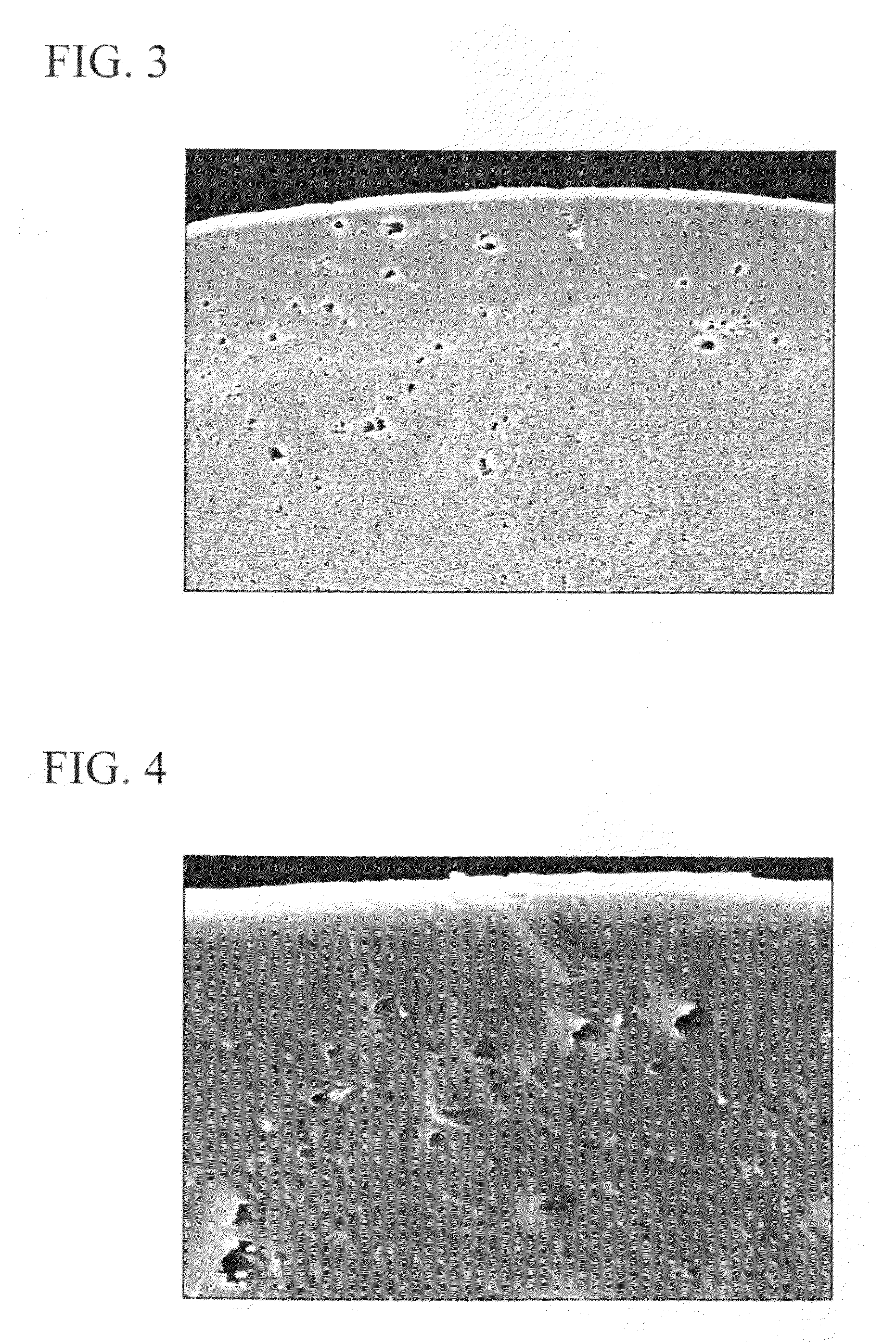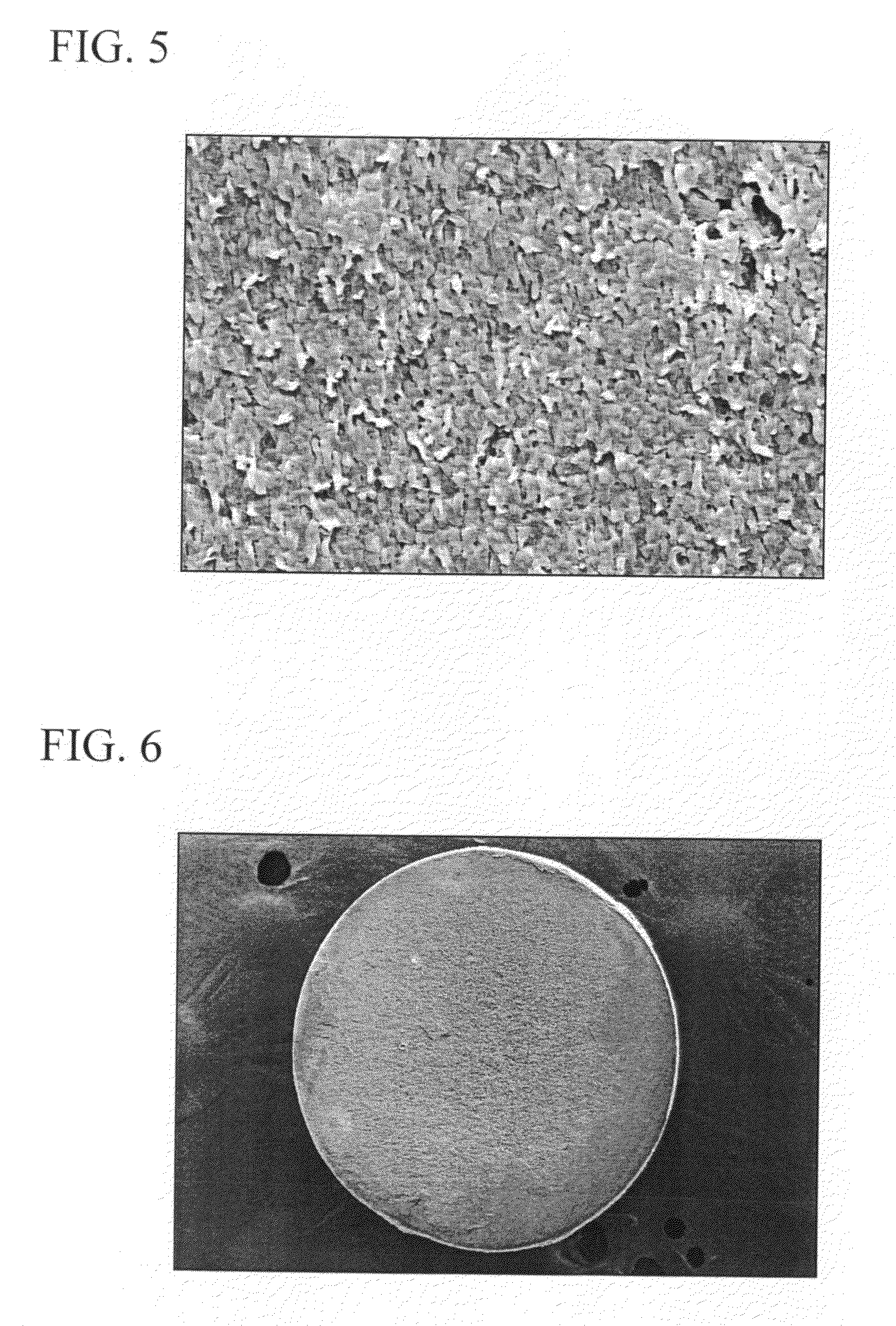Expandable polystyrenic resin particles and production process thereof, pre-expanded particles and molded foam product
a technology of expandable polystyrenic resin and production process, which is applied in the direction of foundry molds, woodworking apparatus, metal-working apparatus, etc., can solve the problems of limiting the expansion of their applications, high production costs, and inability to store expandable resin particles, etc., to achieve superior crack resistance, high expandability, and superior crack resistance
- Summary
- Abstract
- Description
- Claims
- Application Information
AI Technical Summary
Benefits of technology
Problems solved by technology
Method used
Image
Examples
example 1
[0145]100 parts by weight of ethylene-vinyl acetate copolymer (EVA) (vinyl acetate content: 5% by weight, melting point: 105° C., melt flow rate: 0.5 g / 10 minutes, density: 0.93 g / cm3), 0.5 parts by weight of diatomaceous earth (water-containing silicon dioxide) and 0.1 parts by weight of a radical scavenger in the form of n-octadecyl-3-(3,5-di-t-butyl-4-hydroxyphenyl) propionate were supplied to an extruding machine followed by melting, kneading and granulating by cutting in water to obtain oval-shaped (egg-shaped) polyolefin resin particles (micropellets). Furthermore, the melt flow rate of the ethylene-vinyl acetate copolymer is the value as determined in compliance with JIS K6924-2, while density is the value as determined in compliance with JIS K7112.
[0146]In addition, the styrene was produced by a method employing dehydration of α-phenylethyl alcohol, and the styrene was prepared so as not contain phenylacetylene.
[0147]A polymerization apparatus was prepared in which a polymer...
example 2
[0156]Expandable resin particles and a molded foam product were obtained in the same manner as Example 1 with the exception of using styrene produced by dehydrogenating ethylbenzene (containing 55 ppm phenylacetylene) for the styrene.
example 3
[0157]Expandable resin particles and a molded foam product were obtained in the same manner as Example 1 with the exception of using styrene produced by dehydrogenating ethylbenzene (containing 120 ppm phenylacetylene) for the styrene.
PUM
| Property | Measurement | Unit |
|---|---|---|
| thickness | aaaaa | aaaaa |
| density | aaaaa | aaaaa |
| mean particle diameter | aaaaa | aaaaa |
Abstract
Description
Claims
Application Information
 Login to View More
Login to View More - R&D
- Intellectual Property
- Life Sciences
- Materials
- Tech Scout
- Unparalleled Data Quality
- Higher Quality Content
- 60% Fewer Hallucinations
Browse by: Latest US Patents, China's latest patents, Technical Efficacy Thesaurus, Application Domain, Technology Topic, Popular Technical Reports.
© 2025 PatSnap. All rights reserved.Legal|Privacy policy|Modern Slavery Act Transparency Statement|Sitemap|About US| Contact US: help@patsnap.com



